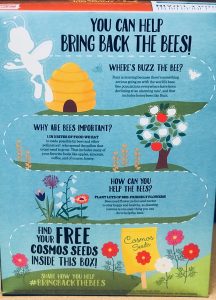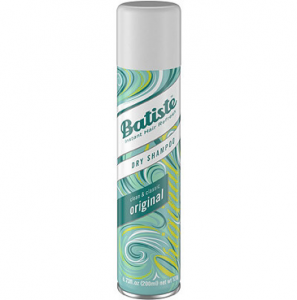So, I’m back in Harris Teeter, but I’ve switched from the cereal aisle to the chocolate aisle. (If you don’t know what I’m talking about, here’s the link to my last blog about Honey Nut Cheerios helping saving our pollinators!)
http://blogs.cofc.edu/envt-200-01/2018/04/29/can-cereal-save-the-bees/
While I’m walking down the chocolate aisle searching high and low for something sweet, something even better caught my attention. It was THIS chocolate bar.
As a matter of fact, there was an ENTIRE row dedicated to this brand of chocolate bars that caught my eye! It’s called Endangered Species Chocolate (ESC). They’ve been a company since 2014 and have a home office in Indianapolis, Indiana. You can learn more about the company at ChocolateBar.com. This website provides you with tabs labeled for their mission to help the world’s endangered species, their retailers, how to contact them, their blog and even a list of their products. I also found links where you can look at the company’s environmental impact and giveback from the previous year (2017), popular posts, twitter feed, and even recipes you can make using their tasty sweets. Here’s some of the main points I found from the website.
- Mission/Giveback: 10% of the company’s net profits are donated annually to current 10% GiveBack Partners. Some of these partners include The Xerces Society, Chimp Haven, the African Wildlife Foundation, and the Wildlife Conservation Network. Each is guaranteed a minimum annual donation of $10,000 and is freely able to utilize the funds on projects they deem most important. With over $1.3 million generated in the past 3 years alone, each chocolate bar purchase is a big support in helping wildlife thrive.
- Sourcing: ESC uses ingredients that meet strict standards for quality, ethical trade and environmental sustainability. They supports sustainable farming practices as well as honors the farmers that work with them by paying a social premium for ingredients to ensure they’re are supported and the species are protected. The company has certifications with Fair-trade International, being gluten free and kosher, RSPO, the Vegan Project, and the Non-GMO Project.
- Products: There are 18 chocolate bars, 2 “bug bite” flavors, and 6 bark bite flavors. These flavors as well as their endangered species support and cocoa percentages* range from:
- Dark chocolate – Chimpanzees
- Dark Chocolate with 88% cocoa – Black Panthers
- Dark Chocolate with Cranberries and Almonds – Grey Wolves
- Dark Chocolate with Forest Mint – Rainforests
- Dark Chocolate with Sea Salt and Almonds – Eurasian Eagle Owls
- Dark Chocolate with Cherries – Puffins
- Dark Chocolate with Hazelnut Toffee – Black Rhinos
- Dark Chocolate with Blueberries – Sea Turtles
- Dark Chocolate with Raspberries – Grizzly Bears
- Dark Chocolate with Espresso Beans – Tigers
- Milk Chocolate – Sea Otters
- Dark Chocolate with Lemon Poppy Seed – Jaguars
- Dark Chocolate with Blackberry Sage –
- Dark Chocolate with Cinnamon, Cayenne and Cherries –
- Dark Chocolate with Cacao Nibs – Bats
- Dark Chocolate with Peppermint Crunch – Emporer Penguins
- Dark Chocolate with Pumpkin Spice and Almonds – Arctic Fox
- Dark Chocolate with Cranberries, Orange, and Cinnamon – Horned Rams
- Dark Chocolate with Caramel and Sea Salt – Bald Eagles
- Dark Chocolate with Almonds and Peanuts – Florida Jaguars
- Dark Chocolate with Caramel and Spiced Apple – Polar Bears *all items without said cocoa percentages are 60%-72% cocoa
- Impact: Here are links to the company’s 2017 Impact Report (http://www.chocolatebar.com/docs/doc_esc_ir_2017.pdf) and Giveback Media Release (http://www.chocolatebar.com/media/3818_giveback.html)
The chocolate bars actually provide the consumer with a lot of cool information about different endangered species of animals as well as a delicious treat. I decided to not be too risky, so I went with the 48% milk chocolate flavor, which happens to have a sea otter on the cover. The inside of this wrapper included information about the sea otter such as it’s diet, threats, population, and regions of location, as well as information on how to help, their ethical ingredients and processes, more on some of the 10% Giveback Partners, and links/scannable QR codes to more information and media for the company. I’m eager to try some of the other flavors the company produces to see what their wrappers say about more endangered species. I highly recommend that everyone try out some of these sweet treats as well to find out more information as to how we, as humans and consumers, can help save those at stake for extinction.
The inside of this wrapper included information about the sea otter such as it’s diet, threats, population, and regions of location, as well as information on how to help, their ethical ingredients and processes, more on some of the 10% Giveback Partners, and links/scannable QR codes to more information and media for the company. I’m eager to try some of the other flavors the company produces to see what their wrappers say about more endangered species. I highly recommend that everyone try out some of these sweet treats as well to find out more information as to how we, as humans and consumers, can help save those at stake for extinction.













